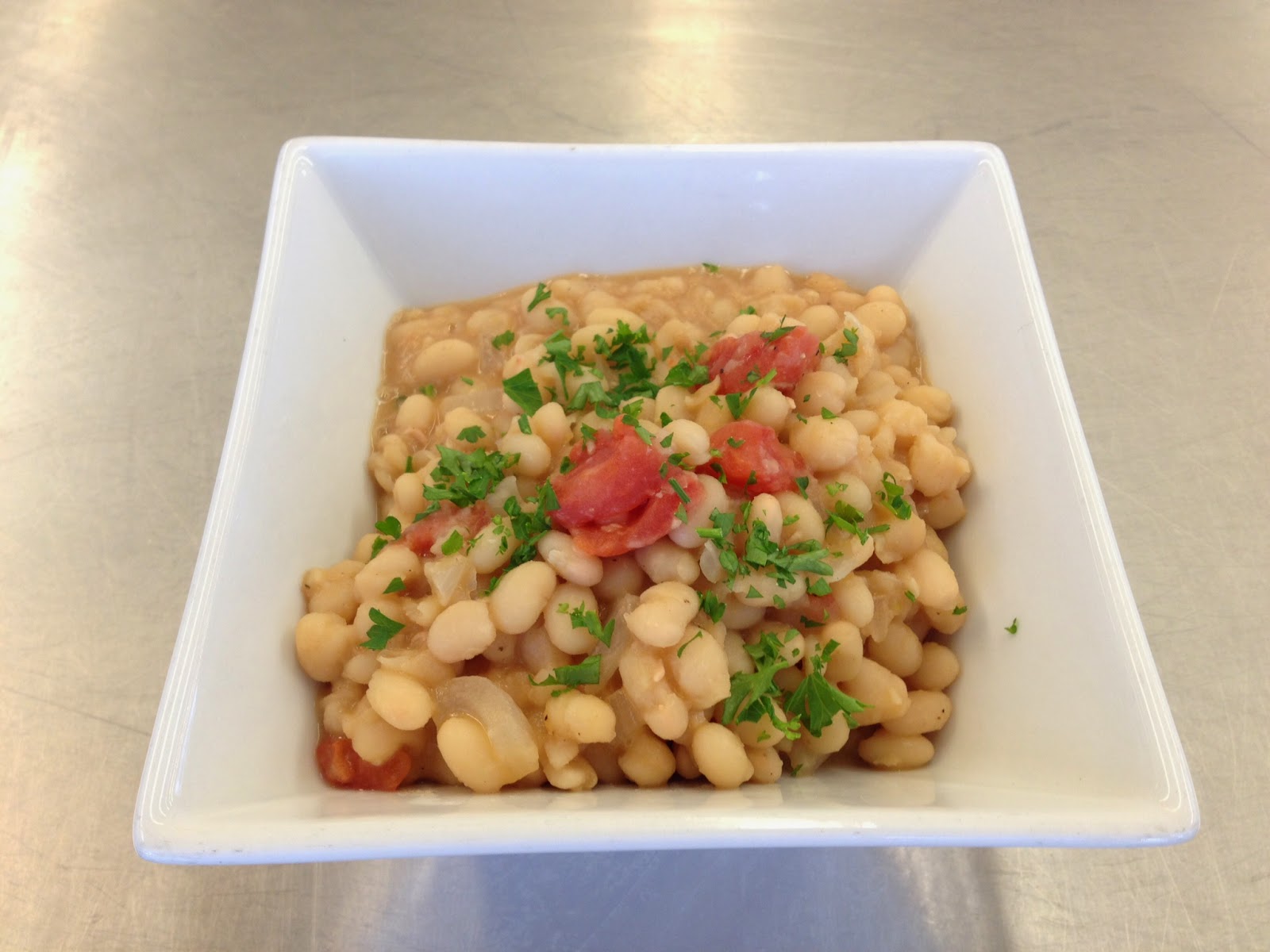Glazed Root Vegetables
If trying to get family and friends to "eat their vegetables", serve them this simple side dish of glazed root vegetables, and they will be happy to accommodate. The recipe calls for parsnips, turnips and carrots, but opt for any root vegetables that are at the height of season for best flavor.
This is a wonderful alternative to boiled or roasted vegetables for a casual dinner, or one of sophistication any time of the year.
Ingredients
6 ounces parsnips, cut into half rondelles, 3/8" thick
8 ounces turnips (or celery root, if in season or preferred), cut into half rondelles, 3/8" thick
10 ounces carrots, cut into half rondelles, 3/8" thick
4-5 teaspoons butter
1/2 ounces sugar (or more, to taste)
Salt, to taste
Chopped parsley, to garnish
Preparation
Trim and peel the parsnips, turnips (or celery root) and carrots. Place the parsnips in a saucepan with boiling, salted water, to cover. Simmer, until tender. Remove the parsnips and set aside. In the same boiling water repeat the process with the turnips and the carrots, respectively.
Heat the butter in a large sauté pan. Add in the boiled vegetables and sprinkle with the sugar. Season to taste with salt, and additional butter to coat, if necessary. Sauté until the vegetables are well glazed and to desired tenderness. Plate the vegetables and drizzle with any remaining pan glaze, and garnish with chopped parsley for service.
Yields: Approximately 2, 6 ounce servings
Chefs Notes: There are two main reasons why it is "a must" to boil the vegetables separately, and in the order indicated. First of all, parsnips, turnips or celery root, and carrots take varying amounts of time to reach desired tenderness; if they were all boiled together some of the vegetables may be
al dente, while others may be under or overcooked. Secondly, using the same water to boil each of the vegetables is most efficient, but if one boiled the carrots first, the orange pigment released into the water during the cooking process would discolor the other vegetables; therefore it is important to boil the carrots last.
Braised Red Cabbage
"I like to get where the cabbage is cooking
and catch the scents."
-Red Smith, American sports columnist
Braised cabbage is such a fantastic side dish, if it is done properly.
This recipe enhances the flavor of the understated vegetable, and with the addition of bacon and diced apple, brings in the sweet and salty flavors that are so attractive to the palate. This side dish would be a wonderful enhancement to any plate or table-scape, both to the eye and taste, but by braising the cabbage further with additional vinegar, this cabbage would be an absolutely phenomenal alternative to sauerkraut on a rustic Reuben sandwich.
Ingredients
(1/6 recipe from Culinary Foundations, Wayne Gisslen)
2-4 ounces bacon, diced
2 Tablespoons canola oil
1 pound red cabbage, core discarded, shredded 3"x 1/4"
1/6 pound onions, julienned 1/8" thick
1 Tablespoon sugar (may need more, to taste)
1/2 cup water
1 apple, cored, uniformly small diced
SACHET: 1 clove, 1 whole allspice, 1 small cinnamon stick
4 teaspoons apple cider vinegar or red wine vinegar
2-3 ounces red wine (or more red wine vinegar, for color and acidity)
Salt, to taste
Pepper, to taste
Chopped parsley, to garnish
Preparation
Sauté the bacon and oil in a large sauté pan over moderate heat until the bacon is slightly crispy. Stir frequently so that the bacon does not burn, nor does it form a "fond", or browning, on the bottom of the pan. Add in onions and continue to sauté. Add in sugar to onions and bacon. Continue to sauté, stirring frequently, until the onions are translucent. Add in the cabbage to braise, Season lightly with salt, to taste. Add in the water and deglaze the bottom of the pan. Add in the sachet and diced apples.
Cover and simmer on low heat, stirring occasionally, until the apples are tender to the touch and the cabbage has reached desired tenderness; approximately 8-10 minutes. Add in the apple cider vinegar or red wine vinegar and the red wine. Additional salt and/or sugar may need to be added, to taste.
Cook for an additional 5 minutes to incorporate the liquids and tenderize the cabbage further.
Season to taste with salt and pepper, plate and garnish for service.
Yields: Approximately 4, 5 ounce side portions
Chefs Notes: It is very important in this recipe to often taste and adjust seasoning accordingly. The sweetness, or lack there of, of cabbage varies so greatly depending on the season, the particular crop or where it was grown, that seasoning properly is essential to draw out the desired flavor.





























































